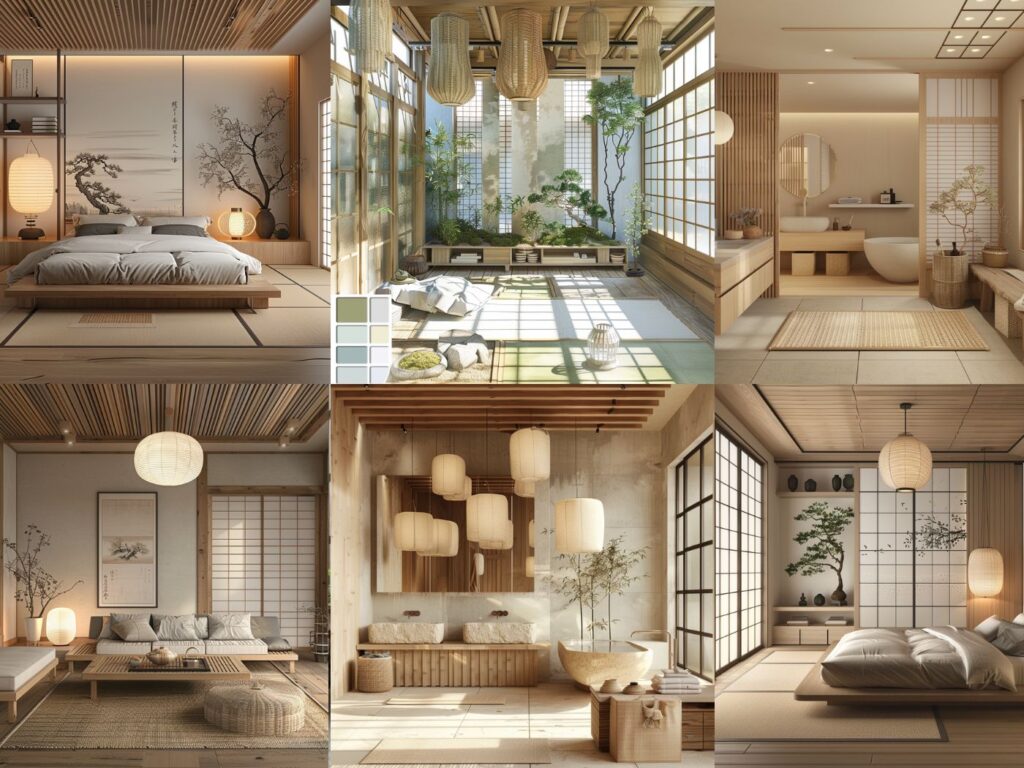Imagine stepping into a space that instantly calms your mind and soothes your senses. Japanese interior design offers just that—a perfect blend of simplicity, natural elements, and harmony. If you’re tired of cluttered rooms and chaotic decor, this minimalist approach can transform your home into a serene sanctuary.
You may well be curious about how to achieve such tranquility in your own living space. From the use of natural materials like wood and stone to the thoughtful arrangement of furniture, Japanese design principles focus on creating balance and peace.
Ready to discover how you can bring these timeless aesthetics into your home? Let’s explore the essentials that make Japanese interior design so uniquely captivating.
14 Japanese Interior Design Ideas And Styles
#1. Japanese Living Room Interior Idea
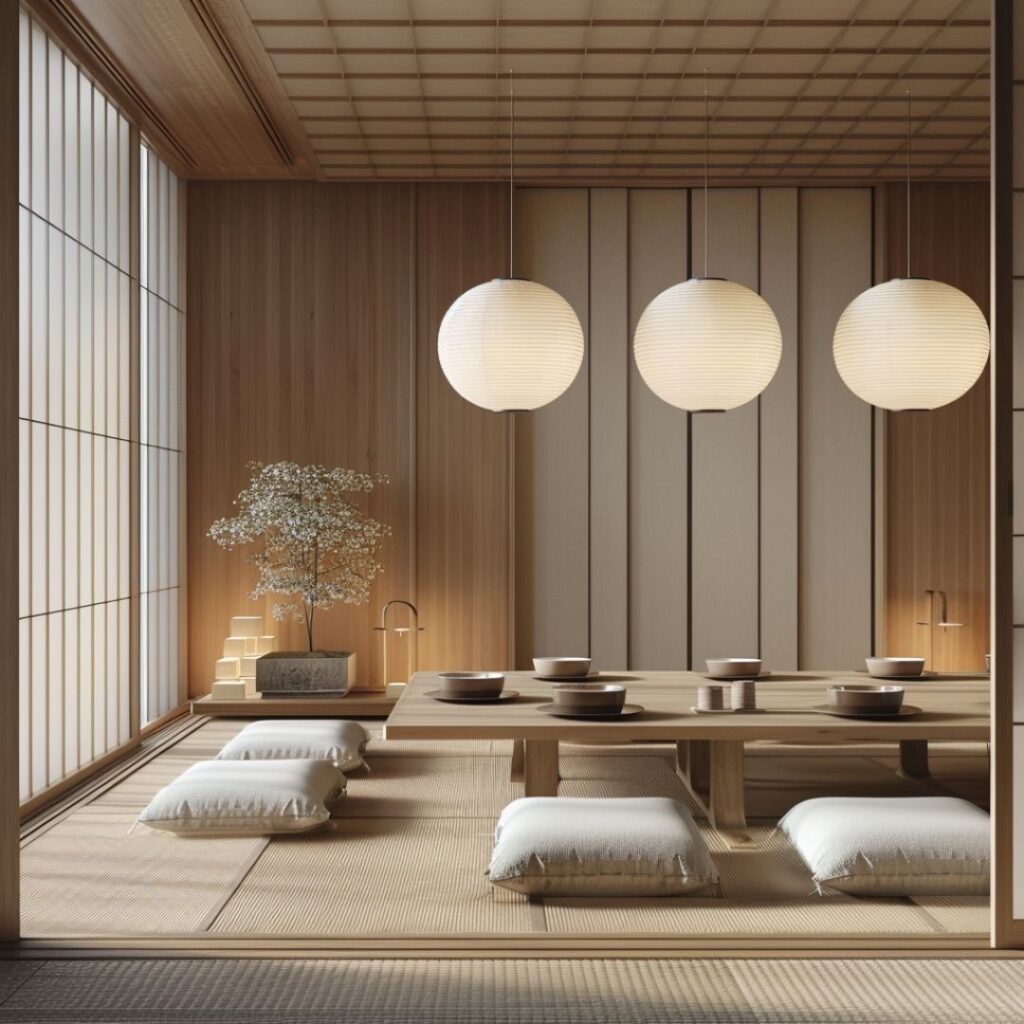
#2. Japanese Living Room Interior Design
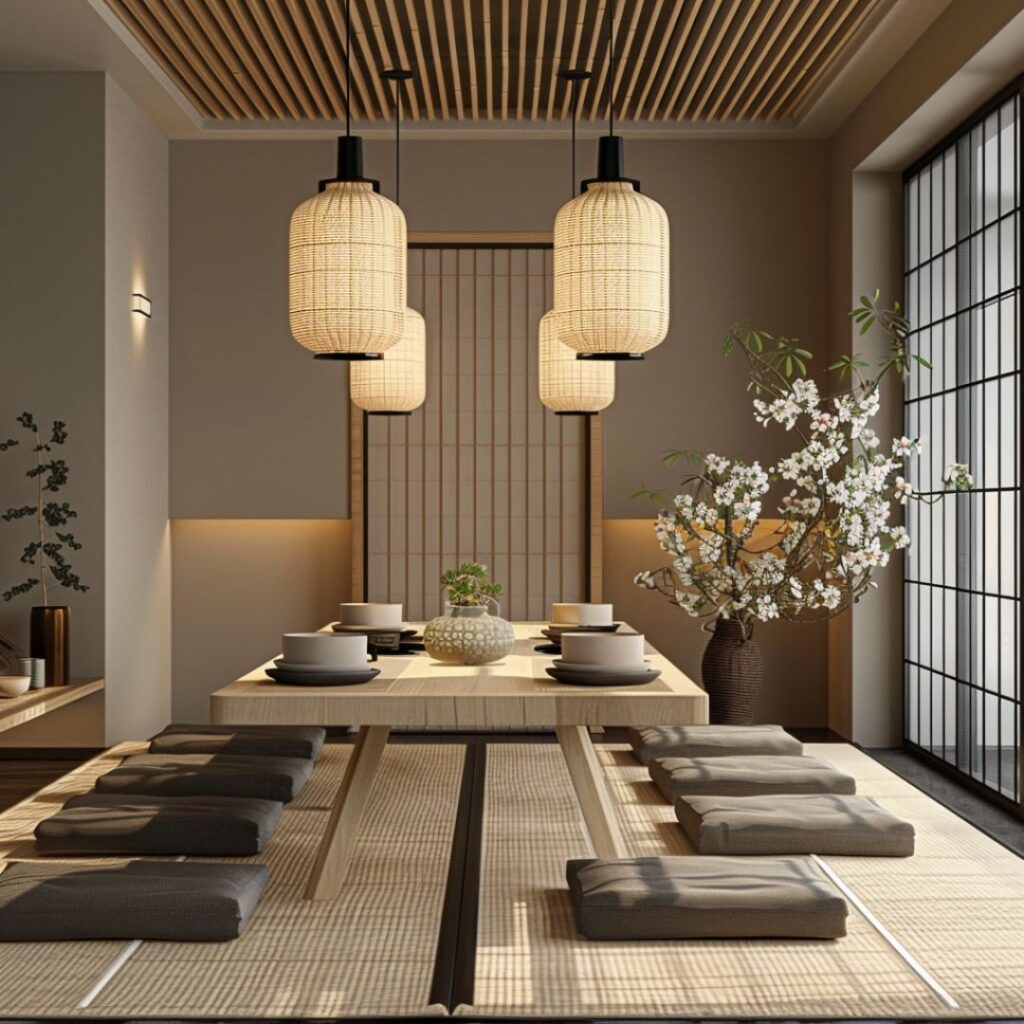
#3. Japanese Living Room Idea
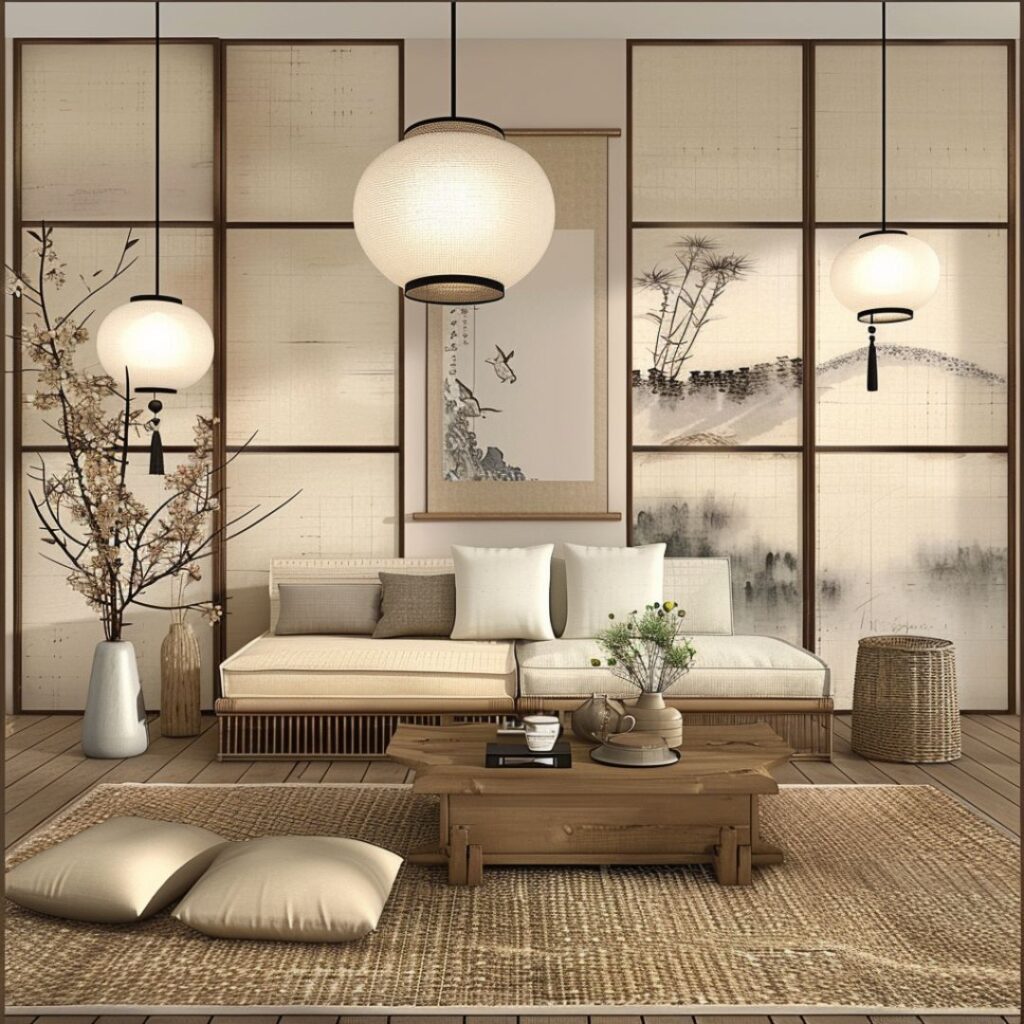
#4. Japanese Living Room Design

#5. Japanese Greenhouse Interior Idea
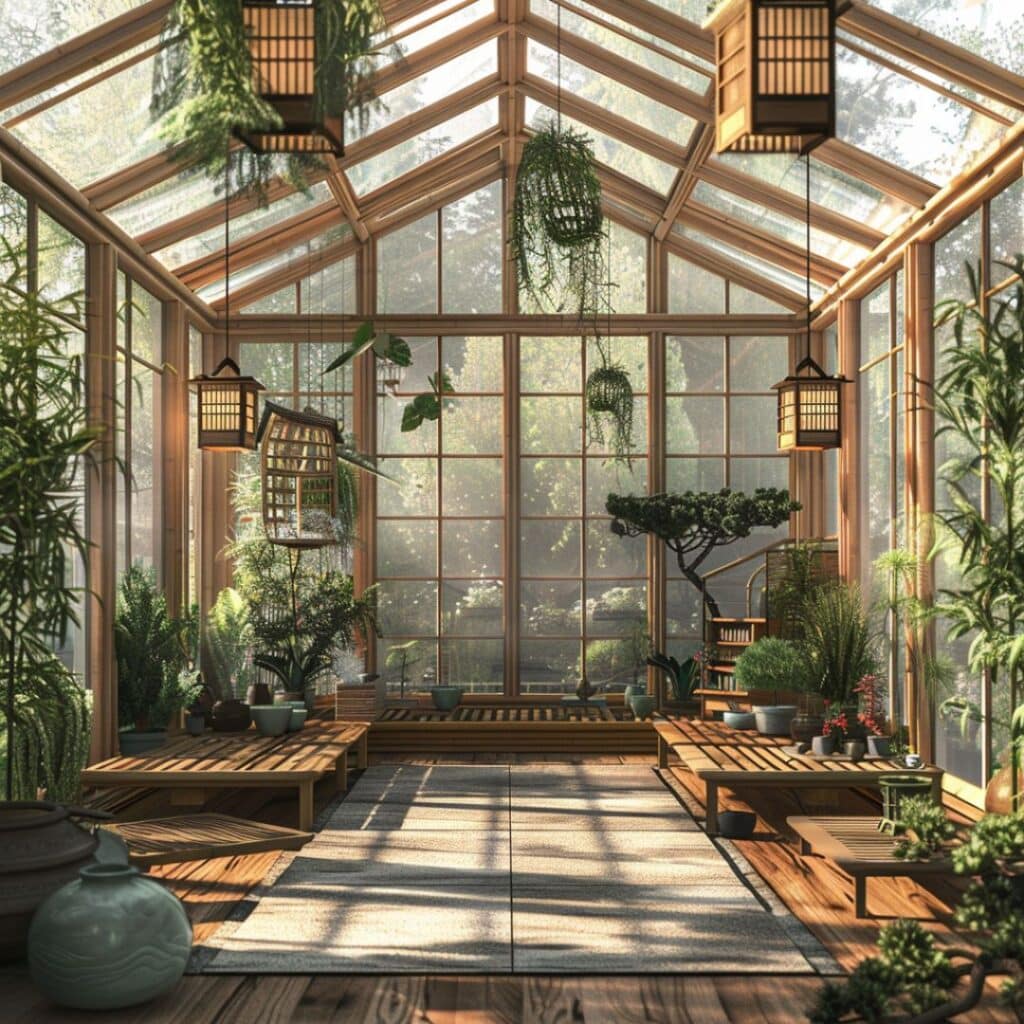
#6. Japanese Greenhouse Interior Design

#7. Japanese Greenhouse Idea
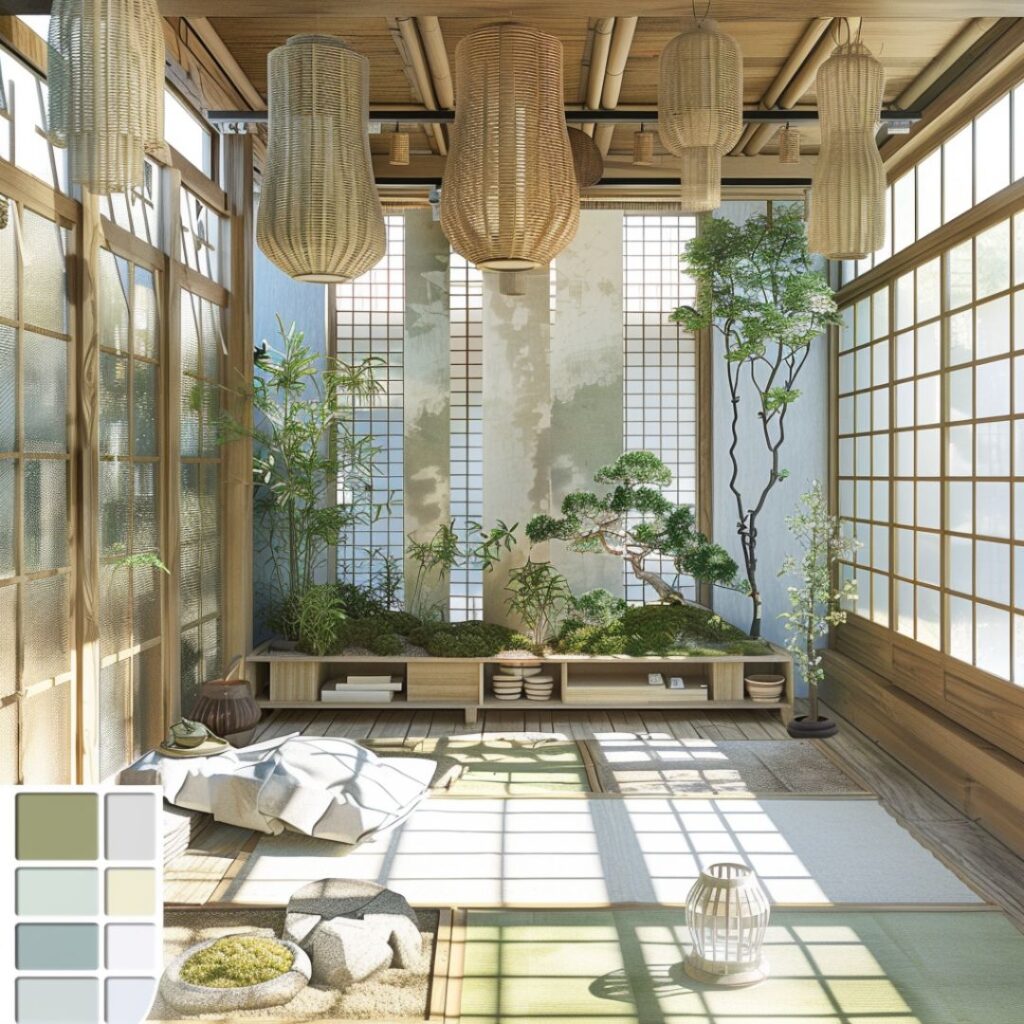
#8. Japanese Bedroom Interior Design
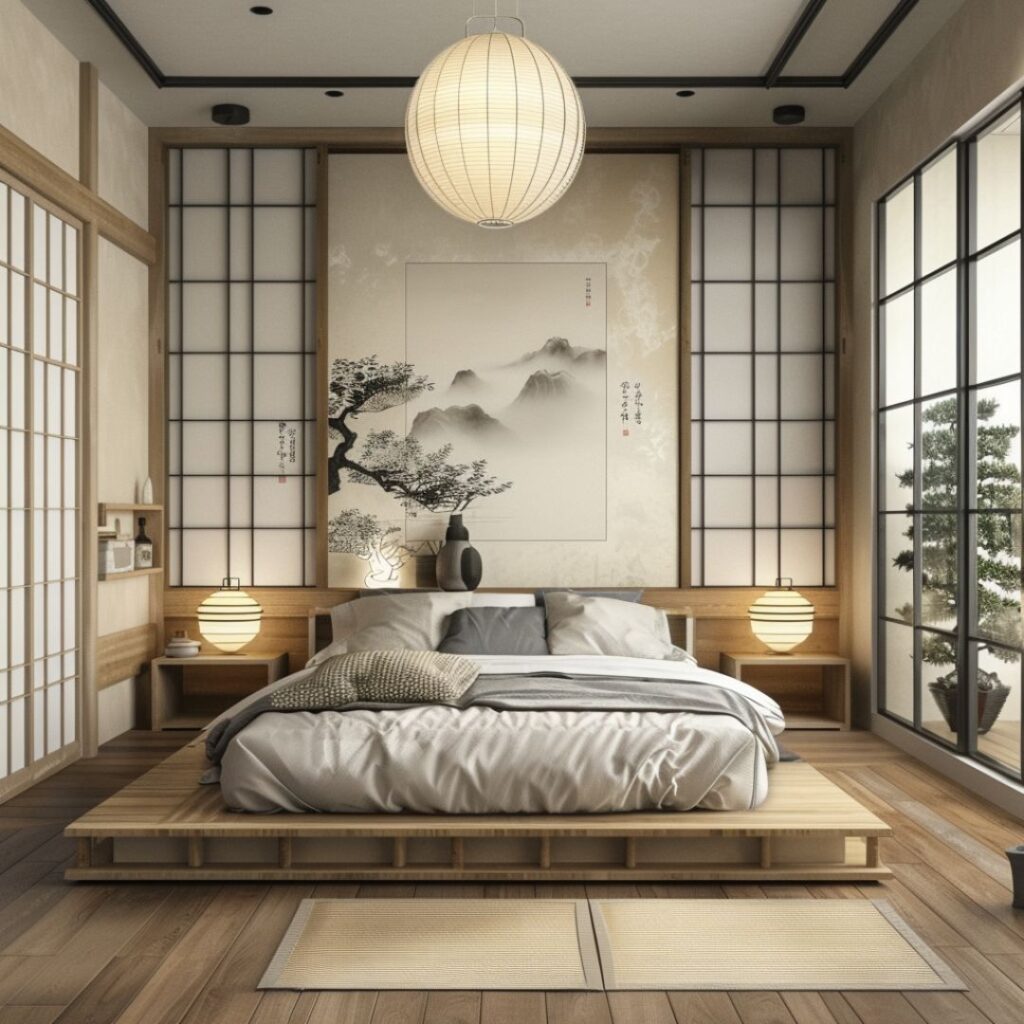
#9. Japanese Bedroom Idea
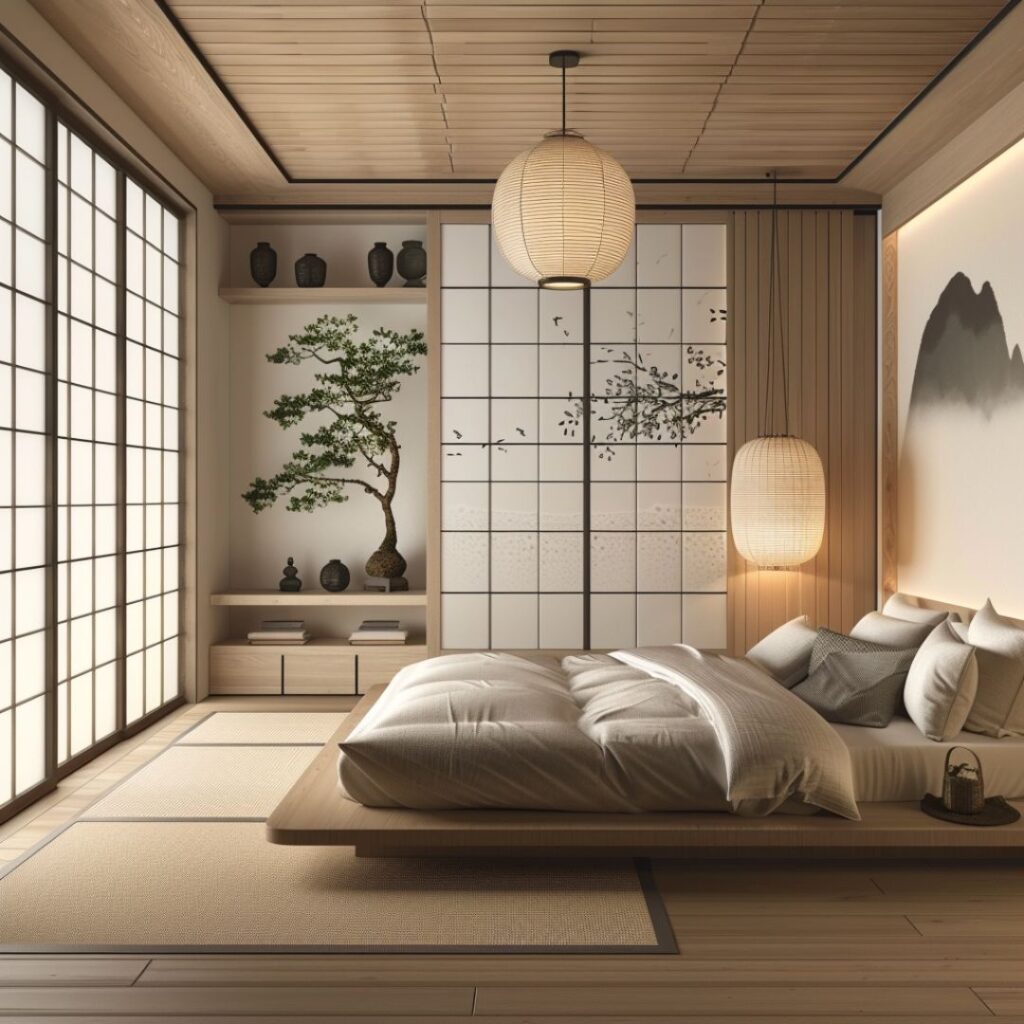
#10. Japanese Bedroom Design
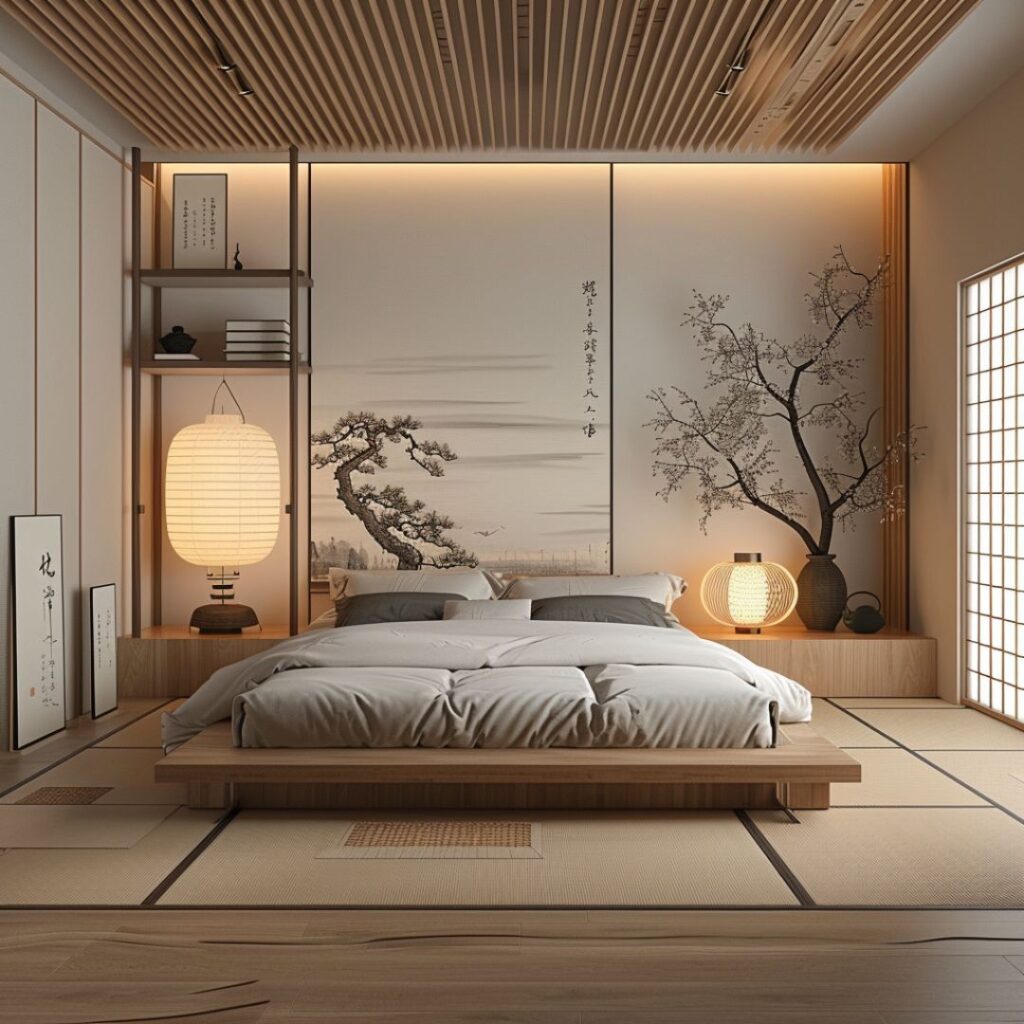
#11. Japanese Bathroom Interior Idea
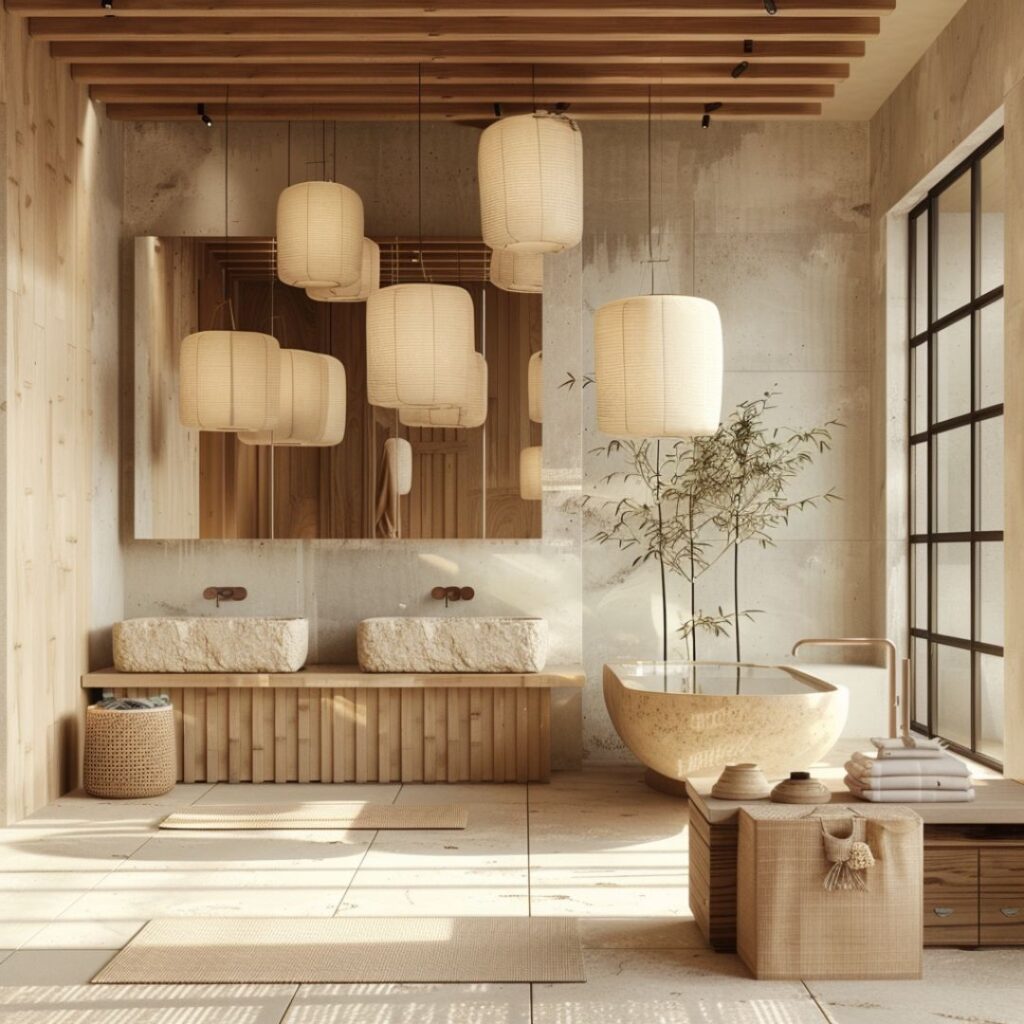
#12. Japanese Bathroom Interior Design
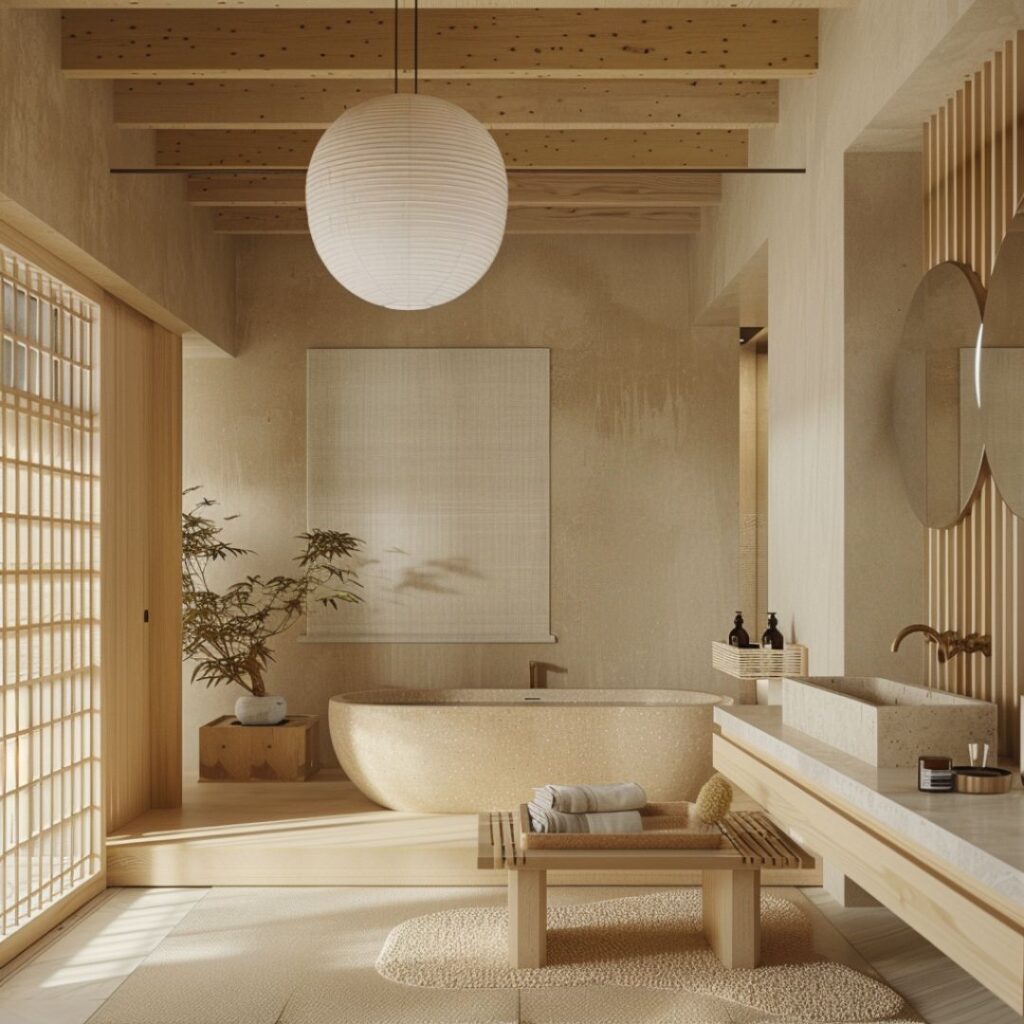
#13. Japanese Bathroom Idea
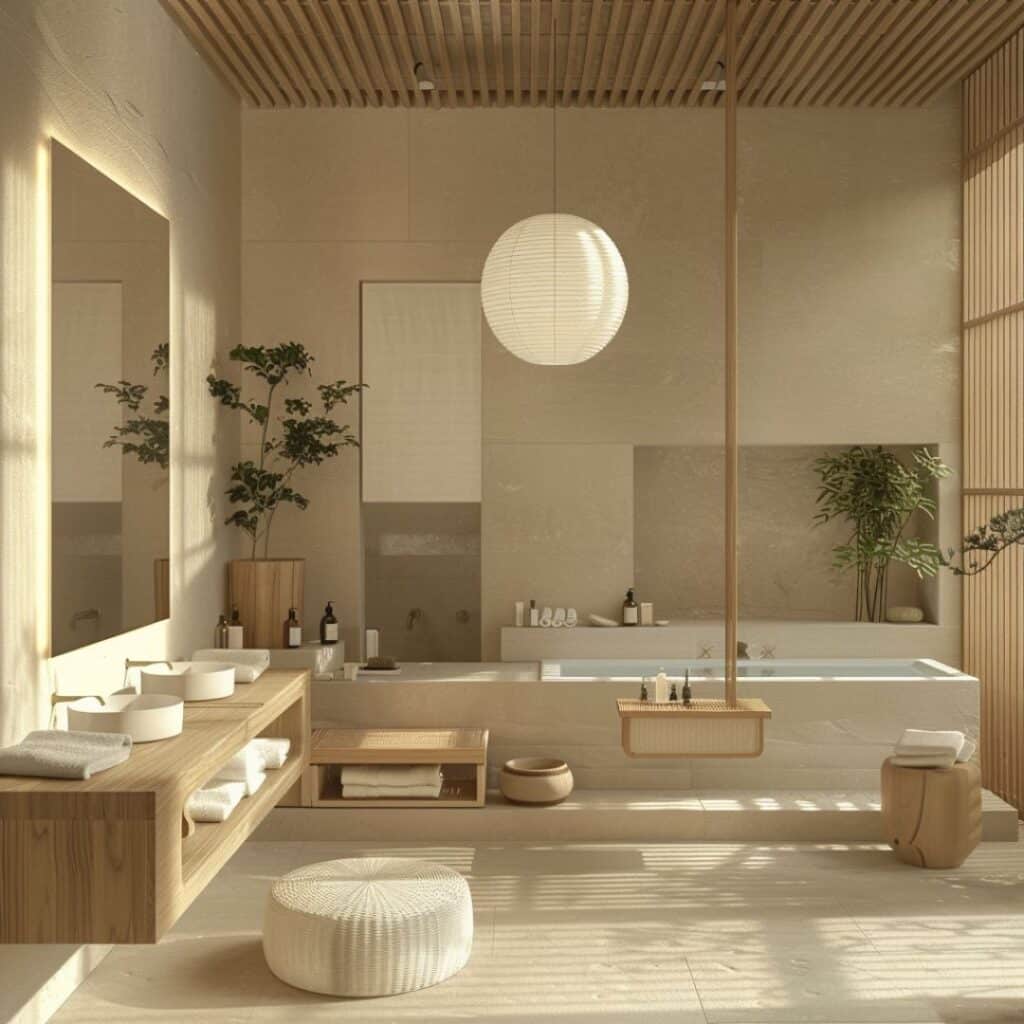
#14. Japanese Bathroom Design

The Essence of Japanese Interior Design
Japanese interior design centers on simplicity, natural elements, and harmony. These principles transform spaces into serene sanctuaries.
Key Principles
Simplicity: Simplify your space by removing clutter. Use minimal furniture and decor to create a clean environment.
Natural Materials: Integrate wood, stone, and bamboo. These elements bring nature indoors.
Balance and Harmony: Arrange furniture thoughtfully to achieve balance. Symmetry contributes to peace in your living space.
Historical Influences
Japanese design evolved from traditional tea rooms. These spaces emphasized tranquility and mindfulness.
Zen Buddhism influenced the minimalist aesthetic. Its principles encourage simplicity and meditation.
Tatami mats became a key feature in homes during the Edo period (1603-1868). They provide comfort while maintaining a connection with nature.
Essential Elements of Japanese Decor
Japanese interior design creates harmony through simplicity and natural elements, often aligning closely with the principles of Zen interior design.
Natural Materials
Using materials like wood, bamboo, and stone reflects nature. Wooden furniture and sliding doors known as shoji bring warmth. Bamboo blinds filter light softly, enhancing comfort. Stone accents in gardens or entryways add tranquility.
Minimalist Approach
Minimalism reduces distractions by emphasizing essential items. Furniture with clean lines fosters a serene environment. Open spaces allow for better flow and mindfulness. Each piece serves a purpose, contributing to the room’s balance.
Popular Color Schemes in Japanese Design
Japanese interior design embraces calm and simplicity through its color schemes. These palettes often reflect natural hues.
The Role of Neutral Tones
Neutral tones are foundational in Japanese interiors, much like in Japandi interior design. Shades like beige, white, and soft grays create a serene backdrop. These colors mimic nature, fostering a peaceful atmosphere. Walls, floors, and furniture commonly use these tones to maintain harmony.
Accent Colors
Accent colors add subtle vibrancy without overwhelming the space. Earthy greens, muted blues, and warm browns enhance the neutral base. For example, cushions or artwork can introduce these accents effectively. This balance preserves tranquility while adding depth to the design.
Influence of Japanese Design on Modern Décor
Modern décor heavily draws from Japanese design principles. These influences encourage simplicity, functionality, and an intrinsic connection to nature, reflecting broader trends in Asian interior design.
Minimalism Movement
Japanese design significantly impacts the minimalism movement. It strips spaces down to their essentials, focusing on function over form. Clean lines and uncluttered environments dominate this style.
Fusion of Traditional and Contemporary Elements
Architects blend traditional Japanese elements with modern aesthetics in contemporary settings. Shoji screens, Tatami mats, and low furniture integrate seamlessly into current interior designs. This fusion maintains tradition while embracing modernity.
Japanese design’s influence on modern décor is unmistakable through its emphasis on simplicity, balance, and natural materials.

